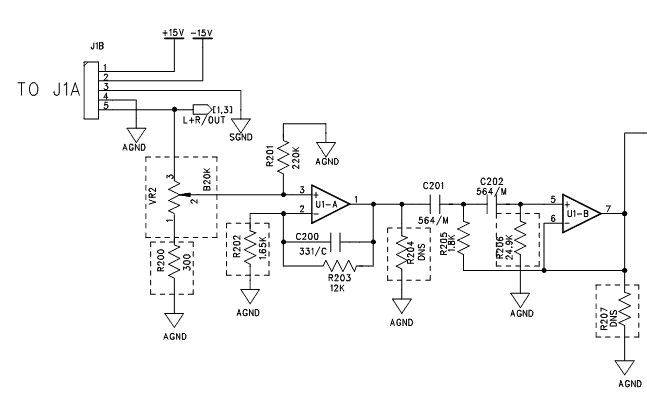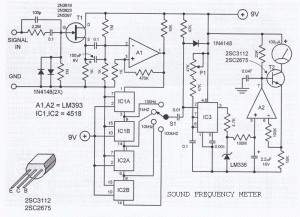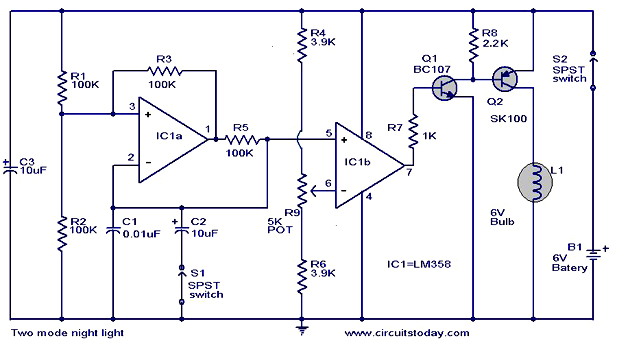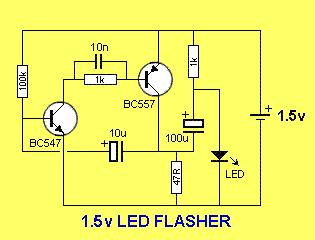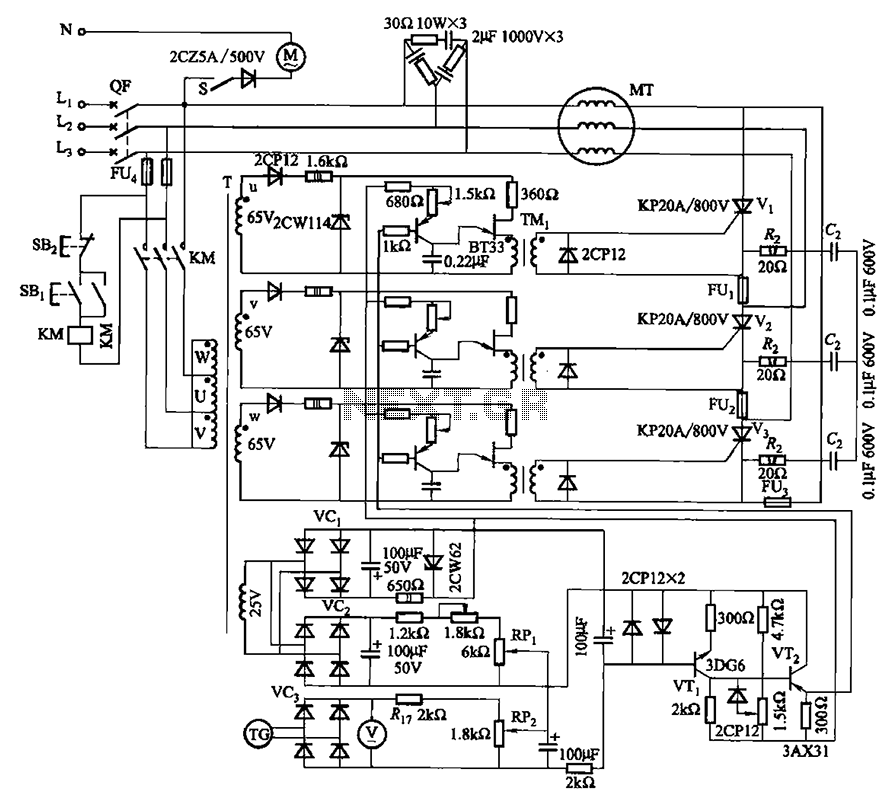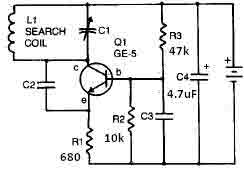
555 Timer Circuit With Variable On/Off Times
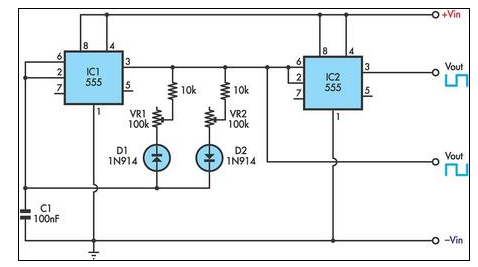
This circuit allows for the independent variation of the on/off times of a 555 timer across a wide range. This capability is not achievable with a conventional 555 timer circuit.
The described circuit enhances the functionality of the standard 555 timer by enabling independent control over its timing intervals. In a typical 555 timer configuration, the timing intervals are determined by the resistors and capacitors connected to the timer, which limits the flexibility in adjusting the on and off durations. However, this circuit introduces a method to vary the on and off times separately, allowing for more complex timing applications.
To implement this, the circuit may utilize additional components such as potentiometers or variable resistors for each timing interval. The 555 timer operates in astable mode, where it continuously switches between high and low states. By connecting separate timing resistors and capacitors for the charging and discharging paths, the circuit can achieve distinct on and off durations.
The schematic would typically include the 555 timer IC, two resistors (R1 and R2), and two capacitors (C1 and C2). R1 and C1 would set the on time, while R2 and C2 would determine the off time. The values of these components can be adjusted to achieve the desired timing characteristics. Additionally, the circuit may include diodes to prevent backflow of current, ensuring stable operation during transitions.
This design is particularly useful in applications where precise timing control is required, such as in pulse width modulation (PWM) for motor control, timing circuits for LED flashing, or in generating specific frequency signals in audio applications. By allowing independent control of the timing intervals, the circuit provides enhanced versatility and adaptability for various electronic projects.This circuit enables the on/off times of a 555 timer to be independently varied over a wide range. This is not possible with a conventional 555 circuit wi.. 🔗 External reference
The described circuit enhances the functionality of the standard 555 timer by enabling independent control over its timing intervals. In a typical 555 timer configuration, the timing intervals are determined by the resistors and capacitors connected to the timer, which limits the flexibility in adjusting the on and off durations. However, this circuit introduces a method to vary the on and off times separately, allowing for more complex timing applications.
To implement this, the circuit may utilize additional components such as potentiometers or variable resistors for each timing interval. The 555 timer operates in astable mode, where it continuously switches between high and low states. By connecting separate timing resistors and capacitors for the charging and discharging paths, the circuit can achieve distinct on and off durations.
The schematic would typically include the 555 timer IC, two resistors (R1 and R2), and two capacitors (C1 and C2). R1 and C1 would set the on time, while R2 and C2 would determine the off time. The values of these components can be adjusted to achieve the desired timing characteristics. Additionally, the circuit may include diodes to prevent backflow of current, ensuring stable operation during transitions.
This design is particularly useful in applications where precise timing control is required, such as in pulse width modulation (PWM) for motor control, timing circuits for LED flashing, or in generating specific frequency signals in audio applications. By allowing independent control of the timing intervals, the circuit provides enhanced versatility and adaptability for various electronic projects.This circuit enables the on/off times of a 555 timer to be independently varied over a wide range. This is not possible with a conventional 555 circuit wi.. 🔗 External reference
